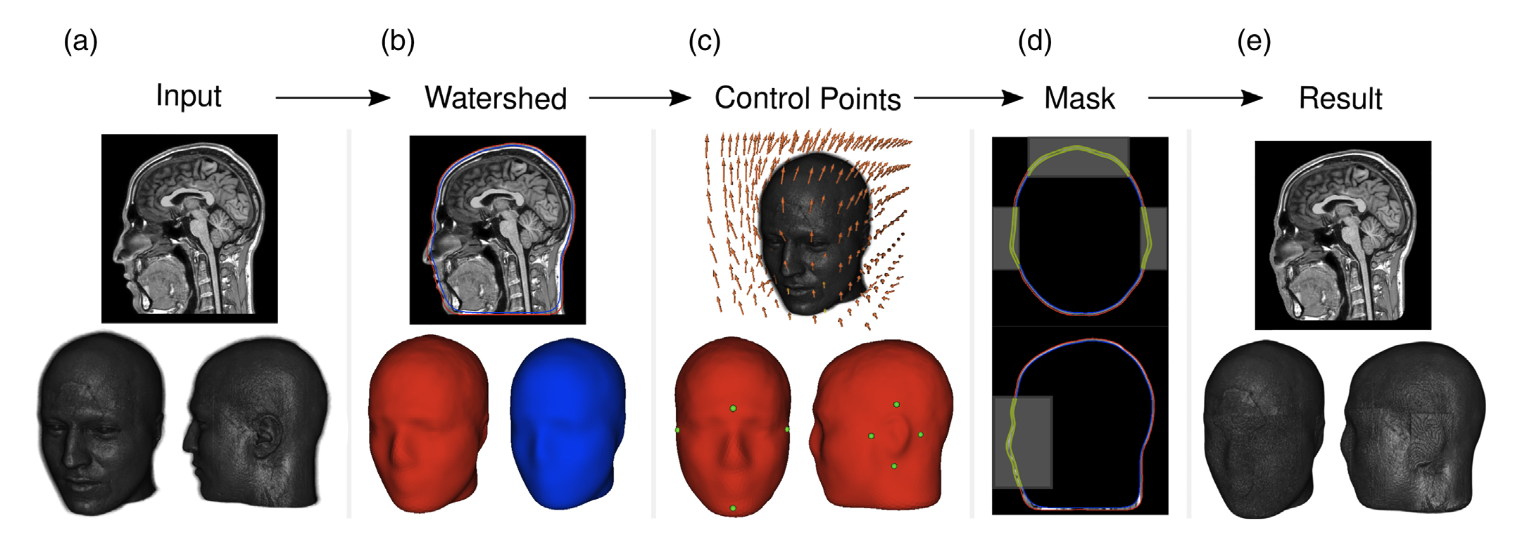HBP researchers develop new method for deidentifying magnetic resonance images to facilitate data sharing
01 November 2021
A research team from the University of Milan demonstrate in a study recently published in Human Brain Mapping that their new method AnonyMI outperforms previous strategies to deidentify MRI data with minimal loss of geometric information, facilitating data sharing in accordance with data protection regulations.

Data sharing enables large-scale investigations that individual laboratories could not carry out by themselves. To this end, one of the aims of the Human Brain Project is to provide open access to neuroscience data following FAIR (findable, accessible, interoperable and reusable) principles.
However, when it comes to data about human research subjects or patients, data sharing can potentially violate privacy. Such is the case for magnetic resonance imaging (MRI) which contains explicit facial features allowing the reidentification of individuals. In order to share data openly in accordance with the European General Data Protection Regulation (GDPR), researchers need to deidentify, or anonymize, magnetic resonance images – minimizing the risk of an individual being identifiable based on the data.
Several methods for deidentifying MRI data have already been developed. However, a major limitation is that deidentification is accompanied by a loss of geometric information, for example, by removing or masking facial data. This information loss often reduces the reusability and interoperability of MRI data, because geometrical properties provide important information for certain types of analyses.
To address this issue, HBP researchers from the University of Milan have developed AnonyMI, a new method for deidentifying MRI data that strikes a balance between identity protection and geometric preservation.
To validate their approach the research team directly compared the performance of AnonyMI and two other state-of-the-art MRI deidentification methods, PyDeface and Maskface. They found that all three of the tested methods were equally good at deidentifying images, but AnonyMI outperformed the other two methods in terms of preserving most geometric information about the subject’s head. The study comparing the three methods has recently been published in Human Brain Mapping. AnonyMI is freely available and provides a very powerful tool that can be tailored to individual researcher’s needs and facilitates MRI data sharing.
Scientific contacts
Ezequiel Pablo Mikulan
Department of Biomedical and Clinical Sciences "L.Sacco"
ezequiel.mikulan@unimi.it
Andrea Pigorini
Department of Biomedical and Clinical Sciences "L.Sacco"
andrea.pigorini@unimi.it
Media contact
Peter Zekert
Human Brain Project Public Relations Officer
press@humanbrainproject.eu



